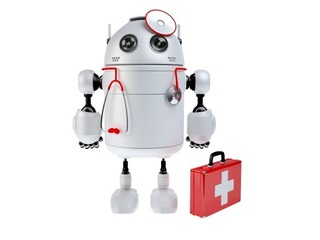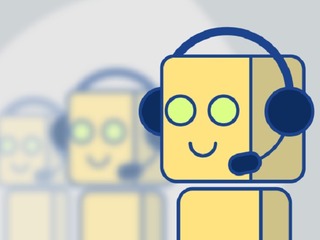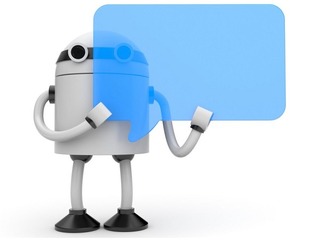Corporate innovator: Dr. Archana Dubey, Chief Medical Officer at UHC
Dr. Dubey spoke to Ranjit Padmanabhan, co-founder and CTO of Autonom8
Read more...
I've been writing numerous articles in recent weeks about the exciting and emerging chatbot space, covering the companies that are innovating, the companies that are up-and-coming, and how chatbots are already affecting certain sectors.
Among those major tech companies already making waves in the bot space include Amazon's intelligent personal assistant Alexa, as well as Lex, which is Amazon's service for building conversational interfaces into any application using voice and text, and Polly, which turns text into speech, allowing developers to create applications that talk. There's also Google, with its Google Assistant, and there's Facebook, which recently bought AI chatbot startup Ozlo to power bots on Messenger. And there's Slack's bot platform, which is used by developers to build bots for the Slack platform.
Another player that is emerging in this space, though perhaps flying a bit under the radar, is Oracle.
The company, which introduced its chatbot entrance in September of 2016, recently ramped up its strategy in a big way, introducing a bot system that can train algorithms to better understand a person’s intent when using a chatbot. Oracle has partnered with Slack to integrate its chatbots onto the platform and also partnering with messaging platform Chatbox to embed Chatbox Instant Apps in Oracle Mobile Cloud.
It's clear that Oracle sees chatbots as a core feature for its future as a company. I spoke with Suhas Uliyar, Vice President of bots, AI, and mobile product management at Oracle about his company's bot strategy, as well as his view on how the chatbot space is evolving and its future.
VatorNews: Can you sum up for me how you view Oracle’s chatbot strategy? Why is this technology integral to the company’s future?
Suhas Uliyar: Over the last decade or so we have seen the adoption of mobile as a primary engagement channel for consumers and enterprise employees alike. What we are seeing now is an increase in messaging channels like FB Messenger, WhatsApp, WeChat, Slack and SMS for all conversations. There are billions of people around the world on these apps and users want the same experience when communicating with businesses.
Oracle has customers across multiple verticals and applications (CRM, ERP, HCM, Marketing, Service, etc.) that provide services to customers and employees. Conversational UI for these verticals and horizontal processes are experiences that are going to be critical in the coming decade and as a result are integral to Oracle’s strategy.
We have continued to innovate and have expanded Oracle Mobile Cloud service with chatbot functionality powered by AI that uses machine learning algorithms to help enterprises engage with their customers and employees through chatbots. There are several machine learning algorithms in our solution to process natural language from the users, deep learning algorithms for the chatbot to continue evolving, and algorithms to understand user sentiment or language. The solution we have built has four major parts: 1) to integrate with these various channels, 2) have a wizard to model the dialog with the end user 3) AI / ML algorithms and 4) integration to enterprise data.
Our strategy goes beyond just using AI for chatbots. Our chatbots platform is built on a micro-services architecture with machine learning engines designed and operating as a micro-service. For the chatbots service, our channel framework integrates with Facebook Messenger, WeChat, WhatsApp, native mobile apps, web-based apps etc., and as these conversations come through the platform, the natural language processing (NLP) micro-service handles the language recognition aspect. This same NLP service can be invoked by any developer that wants to build an application that utilizes NLP. This architecture allows developers to use specific machine learning algorithms for their use cases such as using sentiment analysis to change offers to a customer or using a recommendation engine within their consumer app.
VN: Oracle first introduced its chatbot development platform around a year ago. How have you seen bots evolve in that short amount of time? How quickly is the space changing?
SU: The rate of adoption by customers has shifted dramatically over the last year or so. This time last year, many thought it was a good concept and customers were intrigued, but now we are seeing customers assign budgets and piloting programs at an incredible rate. We are seeing customers that missed the mobile stage jumping straight to the chatbot world.
There are a few factors that are key to this rapid adoption:
VN: You recently announced that you’re introducing a bot system that can train algorithms to better understand a person’s intent when using a chatbot. Is that something that developers requested? What are some of the other things that they want to see from bots going forward?
SU: There are several areas where we are investing and seeing developer interest. This mainly falls into five key components: machine learning, cognitive services, knowledge services, dialog and context, and data and insights.
We continue to enhance and optimize the natural language understanding (NLU) which is essential to understand the conversational interaction with the end user. What we have done is provide a pipeline of algorithms based on linguistic modeling, deep learning neural nets, and spectral word embedding, and we automatically pick the best model based on the customer’s data set (or lack thereof). In addition, the platform is able to automatically extract pertinent information from the user’s conversation (such as date, currency, time, etc.) to slot it for integration to the backend systems of record.
VN: You also recently partnered with Slack to integrate Oracle chatbots onto the platform. Why did you choose Slack for this partnership? What do they offer Oracle that other platforms may not have been able to?
SU: We see Slack as a leader in messaging platforms used in the enterprise. Developers and Lines of Business (LOB) use Slack to communicate, collaborate and share content with each other and their ecosystem. Slack is ideal for them because it’s enterprise grade, integrates with enterprise single sign on, and has data encryption policies, data retention policies, and data storage. Developers can not only collaborate with colleagues, but also kick off DevOps-related jobs that integrate with their build processes, or get status of builds, bugs, etc. In addition, LOB can use their Slack channels with Oracle’s chatbots for procurement-related workflows, employee self-service or interaction with CRM systems.
VN: You also recently partnered with Chatbox. Can you walk me through the relationship and how the two services interact?
SU: Chatbots are great for conversational UI that involves using unstructured data to interact - it provides a great experience where users are performing transactions or looking for answers to questions - but the conversational UI is not the ideal interface for capturing a large amount of structured data or displaying a lot of data. An app or a form is the best way to display this but this needs to be done without losing context or requiring the end user move to a different channel.
This is where Chatbox Instant Apps become valuable. Instead of large monolithic mobile apps, these are contextual micro apps that perform a discrete function such as create a new loan form in a banking bot or perform a return in a retail bot. Instant apps perform that function by taking context from the chat and enabling the user to interact with the responsive form in order to complete the transaction. Chatbox provides us the capability to automatically inject instant apps into bot conversations.
VN: It seems like a lot of your chatbot strategy involves B2B and helping enterprises build apps that allow them to talk to their customers. Are you doing anything that is in the B2C space as well?
SU: Our strategy includes B2C and B2B chatbots. Similar to the mobile space that was led by B2C use cases, we are helping customers build B2C chatbots that combine marketing, operational and customer support use cases.
VN: What do you see coming in the bot space? Where do you believe it will be five or 10 years from now?
SU: I believe bots will be everywhere and conversational UI will be the primary interface of interaction. I see a convergence of bots and immersive UI (augmented reality and virtual reality) with devices that are yet to be imagined but will be used via a conversational UI that interacts with a bot.
Today, chatbots typically have a human agent integration component for handling urgent or time sensitive cases. With the use of AI robotic process automation (RPA), going forward, bots can apply sentiment analysis while the integrated RPA technology will allow for the ability to initiate the processes that are needed to resolve the issue without any human intervention.
VN: Is there anything else you’d like to mention about the chatbot space or Oracle’s bot strategy?
SU: Chatbots and the messaging channels are the new browser. They are doing to apps what browsers did to client server applications. AI is the next frontier that is going to transform and impact every part of our personal and working lives.
(Image source: diginomica.com)
(The Meet the Corporate Innovator series is brought to you by Advsr, a startup advisory firm in the business of starting conversations and sparking big ideas.)
Dr. Dubey spoke to Ranjit Padmanabhan, co-founder and CTO of Autonom8
Read more...Mehrotra oversees company efforts around growth, financial and operational efficiency
Read more...Bartolome's role is to create an ecosystem through partnerships and expand the platform through M&A
Read more...

